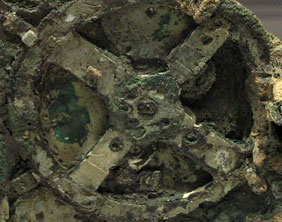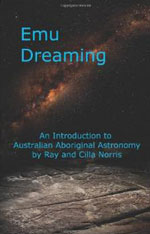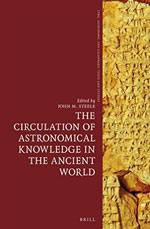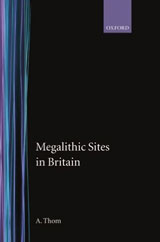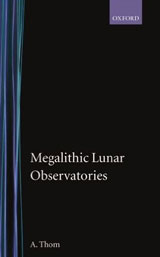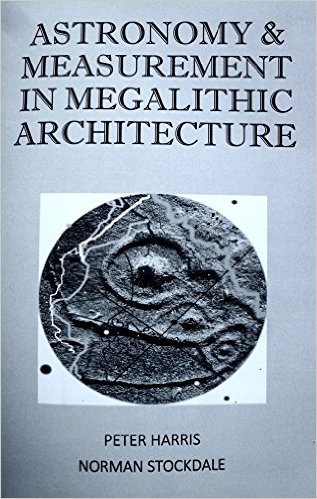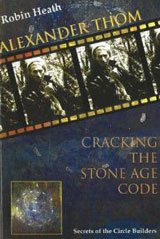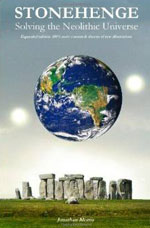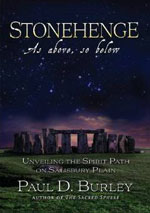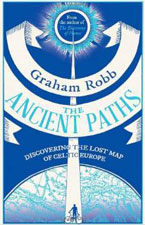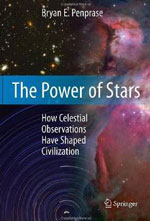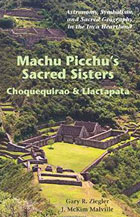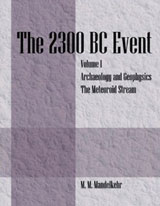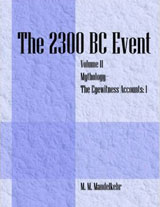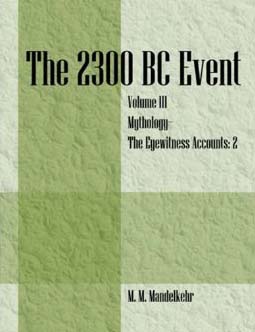|
But to learn about the history of the sun’s activity before the time of telescopes, they have to turn to historical references to phenomena linked to solar activity, like the northern lights. Now, a team of scientists have discovered what may be the oldest written records of aurorae to date. These three Assyrian and Babylonian cuneiform tablets from about 680 to 650 B.C. seem to refer to aurorae lighting up the skies. Chemical analysis of tree rings also show that there was likely a spike in solar activity around that time. This extends the known time span of aurora records to about 2,700 years, as the team reported earlier this month in The Astrophysical Journal Letters.”
It seems, yet again, that the more theses ancient cunieform records are studied the more it can be seen that in ancient times skywatchers were far more capable of observing and accurately recording events in those ancient skies than has previously been acknowledged. It’s well worth a visit to read the full story and see the diagrams of the cunieform tablets – Ed]
However, till the long time, the significance of these etchings were not known to the people, but a recent research published in the TRC School of Telangana Studies has found that the prehistoric art that is found on one of these historic structure in Mudumal and at Gachbiowli depict constellations such as Ursa Major, Gemini, Orion, and others. The research titled, Stars and Stones: The Interpretation of Megalithic Cup-Marks from South India, by K P Rao talks about the knowledge of astronomy in the megalithic community. While talking about the cup marks at Mudumal, Rao noted that these cup marks depicted a formation, which closely resembled to a constellation called Ursa Major.”
The complex astronomical measurements that underpinned many aspects of the Inca civilisation may have an ancient forerunner of 10 centuries earlier and 2000 kilometres distant, a prominent archeoastronomer suggests. Steven Gullberg, of the University of Oklahoma, US, and chair of the International Astronomical Union Working Group for Archaeoastronomy and Astronomy in Culture, is the latest scientist to comment on the origin and purpose of some mysterious stones and engravings, known as petroglyphs, at a site known as La Silla, in Chile. The complex designs etched in rock, together with a set of standing stones, were first studied in depth by researchers in 2012. It was suggested that the artefacts were set up to mark the positions of two very brilliant stars, Canopus and Hadar, and were the work of the El Molle, a pre-Columbian culture that occupied the region for five centuries from about 300 CE.”
Well worth a visit to read the full story and see the image of one of the carved stones – Ed]
In Kashmir such examples abound at various archaeological sites, geographically distributed from north to south. In 2019 if you look at the sky and observe two moons or what is called on scientific parlance as Supernova you will certainly like to share the picture or video with friends on social media. Likewise this phenomenon has puzzled people from the time immemorial and they have been recording it in different forms. Similarly the earth has witnessed various meteorite showers through the course of history. Scientists say this is what happened back in 3600BC. Petroglyph discovered in Burzhom is believed to be that oldest sky chart drawn which was made on a stone slab. The rock art depicts the two bright objects in the sky with shapes of humans and animals. In Bomai, Sopore such rock engravings represent the meteorite shower which experts believe has occurred some 40000 to 6000 years back.”
The interpretation of the symbols carved into stone petroglyphs is insightful, and other archaeologists should take note – ancient peoples were very capable observers of temporary celestial phenomena such as meteorite showers, and more than capable of recording those observations in stone. It really is well worth avisit to the site to read the full story – Ed]
The Inca civilisation in Peru placed great importance on astronomy. They were the only culture in the world to define constellations of both light and darkness. The Incas not only identified constellations and individual stars, but they also assigned each a purpose. They believed that everything in and around our world was connected. It has long been known that astronomy played a central role in the culture, religion, and daily lives of the Inca, who used astronomical events to govern ceremonial occasions and for planning agricultural activities. Cusco for example lies on a radial plan, mimicking the sky and pointing to specific astronomical events on the horizon.”
Sadly, the ‘Great European Reconnaissance’ of the world starting 500 or so years ago, seems now to have deliberately set about trashing all the ancient societies they encountered in their global pillaging rampage, with a main focus on destroying all evidence of their advanced knowledge of the natural world – a world which did not end at the horizon, but which continued on out into the cosmos and was the perspective of all ancient societies. This article is an excellent place to start in any new understanding that our own interpretation of ancient celestial events needs to be as much urgently reviewed as does the standard archaeological paradigm of the abilities of ancient peoples to accurately record them. We highly recommend a visit to read the full story, but the page also has several links to ‘ancient aliens’ conspiracy nonsense, theories that are themselves designed to belittle the amazing astronomical knowledge and achievements of ancient peoples in order to perpetuate the racist Euro-centric narrative that has dominated since the global rampage itself. So be aware…. – Ed]
However, researchers from the Universities of Edinburgh and Kent recently revealed findings that show how ancient cave paintings that date back to 40,000 years ago may in fact be astronomical calendars that monitored the equinoxes and kept track of major events. The study team included Martin B. Sweatman (an associate professor at the University of Edinburgh’s School of Engineering) and Alistair Coombs – a researcher and PhD candidate with the Department of Religious Studies at the University of Kent. Together, Sweatman and Coombs studied the details of Paleolithic and Neolithic art featuring animal symbols at sites located in Turkey, Spain, France and Germany. What they found was that all of these sites used the same method of date-keeping, even though the artwork was created by people living tens of thousands of kilometers and years apart. According to the team’s analysis, the cave paintings were not simply depictions of wild animals (as previously thought) but instead represented star constellations in the night sky. These paintings were apparently used to represent dates and mark major astronomical events like comet strikes. In this sense, they demonstrate that ancient humans kept track of time by monitoring the precession of the equinoxes.”
That such events were catastrophic goes almost without saying, but there is strong resistance by archaeologists and prehistorians to the very idea that these ancient peoples were as intellectually capable as we are today – and probably moreso. This study shows that our interpretation of ancient celestial events needs to be as much urgently reviewed as the standard paradigm of the abilities of ancient peoples. to accurately record them. You can find the original study by Sweatman and Coombs referred to It’s well worth a visit to read the full story, and do read the original study as well – Ed]
As Phys.org reports, the Cairo Calendar has also been called the Calendar of Lucky or Unlucky Days and was determined to have been written between the years 1244 and 1163 BC. This special calendar would have allowed Egyptians to learn what days were either favourable or unfavourable for them by assigning particular days, and even certain times during these days, as either good days or bad days. But besides allowing ancient Egyptians the opportunity to decide whether certain days would be good or not, the Cairo Calendar was also found to have had an astronomical function, which included ascertaining the changing brightness of Algol.”
Ancient Mayans, primarily concentrated in what is now Mexico’s Yucatan Peninsula, were among the most advanced civilisations of their time. Mayans were some of the first to build cities. They used astronomy to advance agricultural production, and they created calendars and used advanced mathematics. But despite all of their progress, the Mayan empire, built over thousands of years, may have crumbled in just a few hundred.”
Celestial phenomena are featured in prehistoric cave paintings. And monuments such as the Great Pyramids of Giza and Stonehenge seem to be aligned with precision to cardinal points or the positions where the moon, sun or stars rise and set on the horizon. Today, we seem to struggle to imagine how ancient people could build and orient such structures. This has led to many assumptions. Some suggest prehistoric people must have had some knowledge of mathematics and sciences to do this, whereas others go so far as to speculate that alien visitors showed them how to do it. But what do we actually know about how people of the past understood the sky and developed a cosmology?”
So to answer the question in the title – ‘were prehistoric people astronomers?’ – YES it’s very obvious that they were, and they certainly didn’t need any ancient aliens to help them. In fact, ancient African peoples were far more intelligent and capable not only of recording accurate observations of celestial events than they have ever been given credit for by the authors of the Euro-centric version of prehistory that has been taught in schools, colleges and universities over the past 200+ years, but also of recording those observations in accurately positioned megalithic monuments on almost every continent. In fact, it is becoming blatantly obvious that ‘Out of Africa’ came the science of the ancient world, which they spread to amlost every corner of it. It’s well worth a visit to read the full story and follow many of the expertly selected relevant links – Ed]
The fall equinox occurs halfway between the summer and winter solstices, when Earth’s tilt is such that the length of the day and night are almost the same. About 4,500 years ago, Egyptian pharaoh Khufu had the Great Pyramid of Giza constructed; it is the largest of the three pyramids – now standing about 455 feet (138 meters) tall – on the Giza Plateau and was considered a ‘wonder of the world’ by ancient writers. Turns out, the pyramid builders somehow designed this ancient wonder with extreme precision. ‘The builders of the Great Pyramid of Khufu aligned the great monument to the cardinal points with an accuracy of better than four minutes of arc, or one-fifteenth of one degree’, Glen Dash, an engineer who studies the Giza pyramids, wrote in a paper published recently in The Journal of Ancient Egyptian Architecture.”
But the presence of two celestial objects in the drawings has piqued the interest of a group of Indian astronomers. According to a study published in the Indian Journal of History of Science, the Kashmir rock drawings may be the oldest depiction of a supernova, the final explosion of a dying star, ever discovered. Archaeologists found the carvings nearly half a century ago in Kashmir’s Burzahama site, where the oldest settlements have been dated to about 4,300BC. It showed two hunters, a bull, and two beaming disks in the sky initially speculated to be two suns. That explanation did not satisfy Mayank Vahia and a team of astrophysicists in India and Germany. They settled on Supernova HB9, a star that exploded around 4,600BC. Viewed from Kashmir, the supernova would have occurred somewhere near the Orion constellation, ‘Which is known as the scene of a hunter’, said Vahia ‘The supernova also went off just above the constellation of Taurus, the bull, which is also seen in the drawing’, Vahia added.”
But it should also be remembered that in that area of the sky at those times was the bright fragmenting comet known as proto-Encke, which was responsible for many bombardments of Earth with cometary debris from the Taurid debris streams. Two large pieces of any fragmenting comet may well appear as two suns to observers on Earth. A full review of all ancient petroglyphs and carvings is urgently needed, and it may be better directed by open-minded astronomers than left to mainstream archaeologitsts – but take them along too as they may well learn something useful. It’s well worth a visit to read the full story and see the images of the carvings and their projection onto a star chart – Ed]
The stone “tetzacualco” or sanctuary was found at Nahualac, a site at the foothills of the Iztaccihuatl volcano. According to the National Institute of Anthropology and History (INAH), along with the stone shrine, ceramic fragments, lithic materials, lapidaries and organic remains were found nearby, which have been associated with the Aztec rain god Tlaloc. The researchers have surmised that the placement of the stones is meant to portray a miniature model of the mythical universe. The placement itself creates the effect of making it seem like the stones are ‘floating’ on the water’s surface rather than lying on the pond bed.”
The temple is located beside a Roman fort in Carrawburgh, near Hadrian’s Wall, which served as the most northerly frontier to the Roman Empire, beginning around AD 122. Some modern-day scholars believe that the Romans celebrated Mithras’ birthday on Dec. 25 – the same day eventually chosen by Christians to celebrate the birth of Christ. Using satellite imagery and astronomical software that shows the direction of the sunrises and sunsets, ‘we can easily see that the building is in good alignment along the sunrise on December 25’, wrote Amelia Carolina Sparavigna, a physics professor at the Politecnico di Torino in Italy, in a paper published online recently in the journal Philica. The paper has not been peer reviewed. There is also an alignment between the Mithras temple and the rising sun on the winter solstice, the shortest day of the year, Sparavigna said. Roger Beck, an emeritus professor of Classics at the University of Toronto, who has written extensively on the cult of Mithras, said that he hypothesized that such an alignment existed in a paper published in 1984 in the journal Aufstieg und Niedergang der Römischen. In that 1984 paper, he speculated that the rays of the sun might have illuminated a statue and altar within the Mithras temple on the winter solstice. In his 1984 paper, Beck did not propose that the reason for such an alignment was to celebrate the birthday of the god Mithras on Dec. 25, and he’s skeptical that the Romans celebrated the god’s birth on that day.”
The ritual sunrise observation was the following day when the sun began to rise higher in the sky and was portrayed as ‘reborn’. This ritual was true of many ancient cultures, as was the scientific observation on the solstice day itself. It represented a marking point from which to start the new solar year. Well worth a visit to read the full story and see the temple image – Ed]
The rest of the artifacts, along with the shape of the boat, suggested a date around 2000 years ago, which made the find one of the most anomalous that had ever been recovered from the Greek seas. It became known as The Antikythera Mechanism. In 2006 the journal “Nature” published a letter, and another paper about the mechanism was published in 2008, detailing the findings of Prof. Mike G. Edmunds of Cardiff University. Using high-resolution X-ray tomography to study the fragments of the anomalous Antikythera Mechanism, they found that it was in fact a bronze mechanical analog computer that could be used to calculate the astronomical positions and various cycles of the Moon – as seen from the Earth: – Ed]
|
Civilizations in Anatolia and Greece, through Egypt and the Middle East, and eastward to India and Central Asia were at their height. The collapse of these civilizations due to earthquakes and climatic changes has been mirrored by similar interruptions on all continents, in the Arctic, and extending to the Pacific. The discontinuities have long puzzled archaeologists and historians. New religions and accompanying mythologies appeared at this time in all cultural regions describing bombardment and flooding from the skies. Strangely, the dominant aspect of the mythologies, however, is the observation and worship of a ring appearing to surround the Earth, oriented to the two Ursa (Bear) constellations.”
Simultaneous with the meteoroid fall was a huge downpouring of water which caused flash flooding. Extensive destruction and loss of life resulted. An astonishing aspect of the event was the formation of a ring surrounding the Earth, reflecting sunlight during the day, hiding some stars at night, and moving around the sky through a 24-hour period. Following the ‘main event’, there were crustal movements which shifted the location of water sources, and caused earthquakes which destroyed settlements. Abrupt severe climate changes occurred.”
The Earth’s encounter with a dense cluster of large objects would produce atmospheric phenomena very different from the pleasant and interesting night displays of meteor trails that are within our own experience. The rain of objects would have generated extraordinary visual and auditory effects combined with ground vibrations; and under extreme conditions would bring about severe surface destruction and loss of life. The overall event was associated by the people with powerful deities and formed the basis for major religions. The mythologies and traditions are, in large part, the residues of those religions.”
|
